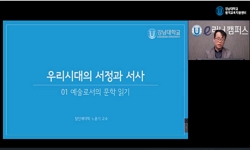The dative alternation in English caused the learnability paradox and many L1 acquisition researchers have dealt with this topic. The purpose of this study was to find out how young Korean learners of English use the verb give and its construction. My...
http://chineseinput.net/에서 pinyin(병음)방식으로 중국어를 변환할 수 있습니다.
변환된 중국어를 복사하여 사용하시면 됩니다.
- 中文 을 입력하시려면 zhongwen을 입력하시고 space를누르시면됩니다.
- 北京 을 입력하시려면 beijing을 입력하시고 space를 누르시면 됩니다.

Young Korean Learners` Usage of the Verb give: Evidence from Their Narratives = Young Korean Learners` Usage of the Verb give: Evidence from Their Narratives
한글로보기https://www.riss.kr/link?id=A101833148
- 저자
- 발행기관
- 학술지명
- 권호사항
-
발행연도
2016
-
작성언어
Korean
- 주제어
-
등재정보
KCI등재
-
자료형태
학술저널
- 발행기관 URL
-
수록면
21-48(28쪽)
- 제공처
-
0
상세조회 -
0
다운로드
부가정보
다국어 초록 (Multilingual Abstract)
The dative alternation in English caused the learnability paradox and many L1 acquisition researchers have dealt with this topic. The purpose of this study was to find out how young Korean learners of English use the verb give and its construction. My arguments are based on the analysis of 11 children``s narratives and their L2 data were collected while each language informant was describing the same wordless picture book, A Circle of Friends by Carmi (2003). The following are the findings: First, it seems that the amount of input bears little or no relation to the usage of the verb give as far as the appropriateness is concerned. Second, 3 informants in the third grade used inappropriate constructions more frequently than appropriate ones (13 versus 7 occurrences). It can be assumed that inappropriate forms like *is give-NP(IO)-NP(DO), *give-NP(DO), or *give-NP(IO), were influenced by their L1. Third, 3 children in Grade 4 began to recognize the verb give as a ditransitive rather than as a transitive, and a prepositional form of the dative alternation was their preference. We can assume that their ill-formed constructions like *is give-NP(DO) (twice), *NP(DO)-and-NP(IO)-is-give, and *NP(DO)-is-NP(IO)-give were the results of L1 transfer. Fourth, 2 children in the fifth grade more frequently used the verb give followed by two objects than the verb followed by a single object (20 versus 12 occurrences). Fifth, it seems that 3 informants in Grade 6 realized the verb give as a ditransitive. The usage of the verb in 2 informants’ narratives was quite appropriate and stabilized, while 1 informant’s narratives showed some characteristics of his Interlanguage. Sixth, it seems that Korean child learners regarded an expression like give me money or give to as a chunk.
동일학술지(권/호) 다른 논문
-
On the Role of Indirect Personal Reference in the Development of Personal Pronouns
- 대한언어학회
- ( Kyung An Song )
- 2016
- KCI등재
-
A Corpus-based Analysis of Chinese EFL Learners` Use of Linking Adverbials
- 대한언어학회
- ( Xinfeng Feng )
- 2016
- KCI등재
-
영화를 활용한 명시적 영어 거절 화행 학습에 대한 연구
- 대한언어학회
- 김혜정 ( Hye Jeong Kim )
- 2016
- KCI등재
-
원어민 보조교사에 대한 일반계 고등학생의 수업 만족도 연구
- 대한언어학회
- 심재우 ( Jae Woo Shim )
- 2016
- KCI등재





 KISS
KISS






